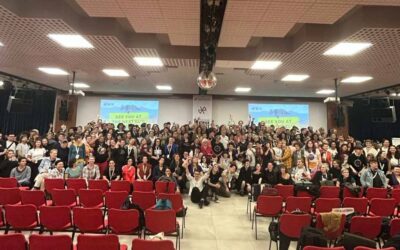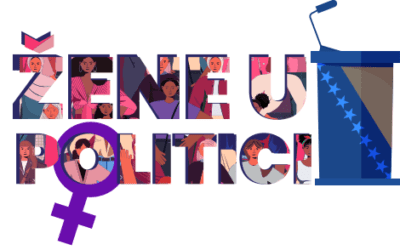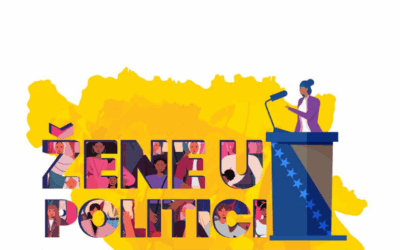The Euro-Med Women’s Rights Conference “From the UfM Ministerial Conclusions to Gender Aequality Policy Making in the Euro-Med Region” organized by Euromed Feminist Initiative and supported by the European Union in the frame of the process Gender Regional Platform, took place on 28-29 November 2016 in hotel Crowne Plaza Beirut. Click Here to view the photo album. This process aims to contextualize the implementation of the UfM Ministerial Conclusions onwomen’s rights (Paris 2013) in the on-going challenges in the region, to enhance regional cross sector co-operation through policy dialogue as well as exchange of best practices with existing networks and stakeholders in the Southern Neighborhood. This process involved over 600 representatives from women’s rights CSOs, CBOs, gender experts, academics and researchers came together, and decision makers and legislators in 6 national and 2 regional dialogues to analyze the changing context since the last Paris Ministerial Conference 2013, to discuss gender equality policy making and agree on national and regional priorities in the current context, in order to prepare concrete policy recommendations to the upcoming 4th UfM Ministerial Conference in 2017.
The Euro-Med Women’s Rights Conference discussed and finalized the Gender Regional Platform with policy recommendations accumulated through the dialogue process and created favorable conditions for a common work towards follow up and monitoring the implementation of the Ministerial Conclusions in the areas of and women’s participation and role in political and economic life, education, and ensuring freedom and independence of civil society. It was attended by over 100 participants from 22 countries from the Euro-Med Region. Representatives from civil society, media and academia, were joined by Ministries and representatives from ministries involved in the Ministerial Process, decision makers and political actors, as well as European Commission and European External Action Service UfM.
Activist of CURE Foundation paticipated on Sesson “Reforming education, challenging stereotyps and social discourse”
Her speach:
In BiH we have 3 presidents, 2 entities and district Brcko, 13 levels of governments and very few women in decision making positions (in all government there is about 20% of women).
The education of young people is not an exception. Due to stratification of the legal framework of education in BiH students learn three different histories (in the same country) depending on which territory they are located.
In Federation of BiH we have the phenomena of ‘’two schools under one roof’’ which is an aggravating circumstance because there are more curriculums. The phenomena of ‘’two schools under one roof’’ was created in 1997 as a result of war in BiH. Two schools under one roof means that children from 2 ethnic groups (Croatian and Bosniak) from the same local community, go to the same school, but they enter the school on different doors, have different subjects, study from the different textbooks, have different teachers and never meet. They grow up with prejudices against each other and are learned to hate ‘’the others’’.
Entities have their own laws about educations and in one entity they has more unified policy, however FBIH has 10 Cantoon ministries for education, science and culture. Each canton created its textbook policy. And after that the schools choose which textbooks will they pick from the list they get from Cantoon Ministry. The result: a lot of textbooks without well done references, with a lot of mistakes, prejudices, calls for hate and violence.
Results of analysis about stereotypes in textbooks in Cantoon Sarajevo
For CURE Foundation, mr.sc. Saša Knežević conducted a research about representation of stereotypes in textbooks (research was conducted for academic year 2015/2016). She conducted a qualitative and quantitative method to explain the results of analysis. The results have been obtained by a research technique of content analysis of textbooks for high school and Comparative analysis of photos and texts in textbooks. The samples of research were Language 1,2,3,4, History 3, Philosophy and Sociology, seven textbooks that are used in high schools in Cantoon Sarajevo by a current curriculum. The author of the research has come to a result that women and girls are numerically underrepresented in textbooks in all grades and all textbooks.
There is 290 photographs in all textbooks, and 27 of those are women. In Philosophy textbook there is only one photo of woman and it is Eve. Situations where women were shown in couples are very stereotypical eg, women are witches or saints, dead or dying, beauties or prostitutes. Women are shown as muse, beauties, goddess, prophetess, queens, peasant woman in national costumes, women – mother and at the end concubines, in harem, women flirting etc. Men are shown as warriors, gods, martyrs, philosophers, scientists, kings, saints, lying on money etc.
Author who analyzed the textbooks also came to conclusions that men are more often presentative of some professions then women. That implies that women are usually unemployed. This clearly defies reality. Also if men and women are presented together in some business situation, men is almost always in leading position (eg, doctor(man) and nurse (woman))
In the pictures and text in textbooks, activities inside of house are showed only as women’s work, man can be seen as working in the field or going to war. Women can mostly be seen as mothers taking care of their kids and nourish them when they are ill. Fathers are rarely shown, almost never, and if/when they are shown then it is while doing some kind of activities that are not part of everyday life. The fact that some women have to raise their kids alone is almost totally ignored (modern texts), ‘holly family’’ (father-mother-child) dominates in textbooks.
Historical displays tend to falsification and discharge the role of women in history. In displaying culture of hunters and collectors, women’s role is totally ignored and it’s not mentioned that women also collected a big amount of food. Gender sensitive language is not in use in textbooks and it makes women invisible.
Family has special place in textbooks, from the beginning of schooling. There are few definitions of family and all of them confirms that only recognized family is ‘holy faily’, patriarchal, made by father – feeder and mother – caretaker that are married and have their biological children. Adopted kids are mentioned few times, inconsistent and only in definitions, without providing additional space about biological and non-biological love, legal act of adoption and equalization of adopted children with biological, emotionally and legally. Also, medically assisted fertilization and in vitro fertilization are mention only in one Sociology textbook, but very superficial.
In Religion textbook, especially problematic part is the one that consider traditional values of Bosniac families and relations inside of it, and placing it on a pedestal as an example of a perfect community. Authors exclude not only all the other forms of the family, but just by appointment they suggest that there are non-Bosniac families. Placing national or religious epithets with families implies its closure and non-interference. Among the main values of traditional Bosniac family, authors mention need for the offspring, biological reproduction, natality growth and feeling of maternity or fatherhood, and suggest that all social community should bring the effort to sustain this values.
Among all of this, this textbook puts parents in clearly determined gender roles so father is the head of the family and the mother is its soul. We found similar examples in other textbooks, mother and father are still clearly divided on their responsibilities: mother for private and father for public. Photography always show busy men in suit and women who nurses ill child. The author of Psychology book explains it like this: Mother is usually the one who takes care about the children and father is the one who provides financial stability to family.
Also the author of the research about textbooks while analyzing Psychology textbooks assesses that this textbook is full of stereotypes and politically incorrect terminology, and one of them is tomboyish girl. The author of the textbook sees it differently, off course through a story about the sex (gender is never mentioned): Biological differences amongst sexes lead to differences in their behavior. If, for instance happens that the female during the prenatal period, due to endocrine changes, receives stronger action of androgen hormones then the girl takes on manly appearance and manifest more aggressive behavior.


